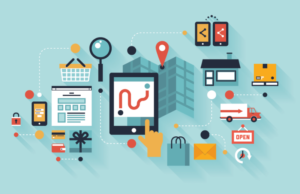The Amazon Alexa Connect Kit (ACK) makes it easy to build an “Alexa-connected smart home“ or “works...
Choosing the right Power Solution for your Connected Product
By: Jay Cahill of Bluefin Technology Partners Over the years Bluefin has developed a pretty wide and deep set of experiences in developing connected products. We continue to get requests from the IoT community at large to share some of those experiences. To satisfy this request we are commissioning a series of blogs that focuses in on some key aspects of IoT development; one tidbit of knowledge at a time.
With that in mind, we thought we’d start off the series by sharing some thoughts and considerations about “Powering your Connected Device.” Here are a few top of mind areas to consider as you start to layout your Connected Device Power Strategy.
The Basic Requirements
As you begin, it's critical to get a firm understanding of the Who, Where, What, When, and How of the product as they shape the fundamental principles of your design.
-
Where will it operate?
-
Who will operate it?
-
What will it do?
-
When will it do it?
-
How will it communicate what it’s doing or has done?
-
Where will it Operate?

Where will the product be deployed and what will be the operating environment? The answers to these questions inform the decision to use a constantly available power supply or the need to design a solution based on battery technology to power it.
In addition to the power draw required for normal operations of the device, the accessibility of the device could greatly impact your power designs when you have to consider that these devices may need remote access to update the firmware that runs on them. Remote updates require network accessibility and the transfer of files - meaning modems or wifi or some other radio controls - thus driving requirements for more juice.
-
Who will operate it?

Understanding the intended audience of the product and their ability to manage the product is extremely important as you need to determine what capabilities they have in assisting in the management of the power for the device. While we should optimally design for autonomous power management in the device, you may have flexibility in your battery requirements if the operator of the device can provide a level of monitoring and metering over that device. Case in point, if the device is for human use, you are more likely to get their participation in managing power consumption versus a pet wearable, where Rover just doesn’t care about how many bars are left on the battery meter.
-
What will it do?

The most obvious consideration for power requirement is sorting out what functions the device will do. Fortunately or unfortunately, not all sensors and their communications mechanisms are made power consumption friendly. For example, if you wanted to use a connected device to monitor your crops to ensure that they are getting watered properly you could develop a connected device that photographs and forwards hi-resolution photos of the crop to the cloud where they can be analyzed and compared for color and content to affirm proper watering -- Or -- you could develop a connected product with sensors that transmits text-based moisture readings from the soil that can affirm proper watering has taken place. Same results, very different power and hence battery requirements.
-
When will it do it?
Regardless of task, the regularity of its execution will drive power needs. In the design of a connected product you often find yourself balancing the frequency of polling the sensor, the size of the information you are capturing and the timing of offloading the data from the device. Should you do small bite size data transmissions more frequently or larger, longer transmission less frequently? The timeliness of the information needs to be weighed against the availability of power to supply the updates.
*** Recommendation
Once you have a firm understanding of your requirements and a broad brush on the Who, What, Where and When, invest in developing a Power Budget - a tool that outlines the consumption of power by your most critical components in your IoT design. (Note: Coursera has a nice overview in Lecture 22). Armed with a Power Budget you can model expected usage patterns and determine the detailed requirements for powering your IoT device over its intended lifetime.Til next time.
